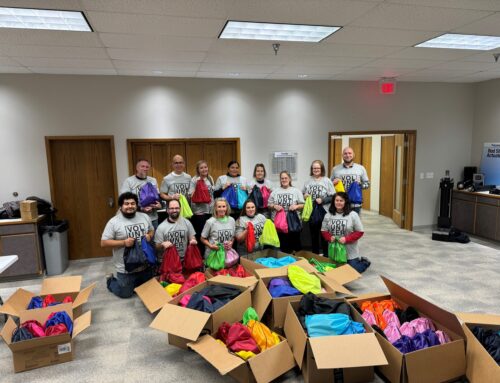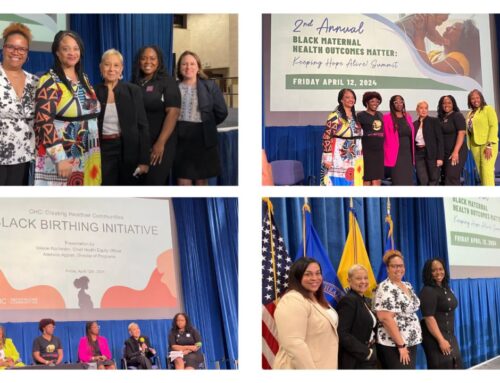By: Romana Rolniak,Walmart Inc;
A Mom’s Realization About Social Determinants of Health
You know those idyllic moms on Facebook and Instagram who seem to always have it together? You see pictures show up with their kids nicely dressed at all times, every hair perfectly in place with an immaculate house, perfectly decorated in the background?
Yeah, I’m not that kind of mom.
I’m the kind of mom who randomly has dance parties in the living room with my kids in between folding loads of laundry, who loves pretending I will keep the plants on my deck alive. Don’t get me wrong, my kids are well taken care of, mostly fed home-cooked meals (mostly made by my husband or mother in law), and my mother makes sure that they have lots of adorable clothes to choose from. (She really likes dressing them up.)
What does that have to do with social determinants of health (SDOH), and what does that mean? I’ll get to that later…
Independence Day week of 2018 I had great intentions of what our week would look like. It would be idyllic… My husband would grill and we would have ice cream. Then, that night we would watch fireworks.
My older daughter, Juliana, is lactose intolerant, so I bought her some cashew milk ice cream to try. (She didn’t care much for almond milk or soy).
As we finish lunch, my younger daughter, who was one at the time, was covered in food, and she needed a full bath.
Juliana asked if she could try her ice cream while Abby (the baby) was taking her bath. So, before we gave Abby her bath, we scooped out a small bowl of the cashew milk ice cream and I waited to see what Juliana thought. She loved it.
Great! We finally have an ice cream substitute she likes.
So, I went to give Abby her bath, while Juliana had her dessert. As I am filling the tub, I hear labored coughing, screaming and banging coming from the kitchen. I scooped up Abby and we ran to the kitchen.
Juliana’s face was red. She had tears streaming down her face, and her mouth was swollen, with her cheeks puffed out.
She told me “Mommy, it feels like there is paper in my throat.” We called immediately to figure out if we needed to drive her to the ER or have an ambulance come out. It was terrifying. My husband and I freaked out. (And in retrospect, we probably didn’t do well helping Juliana stay calm.)
Fast forward: Juliana is a very health nearly seven-year-old now. She has a fantastic primary care doctor and an amazing allergist (who is leading some really cool research on the lone star tick).
When we first met with her allergist, we did our first ever allergy tests. Juliana has a level four allergy to cashews. The cashew milk ice cream was obviously what caused her allergic reaction.
She now cannot eat any food with tree nuts or that is produced on machinery that also touches tree nuts. We carry an Auvi Q or EpiPen with us everywhere we go. We also have to make sure that both of her schools have an Auvi Q or EpiPen on hand, just in case something happens.
But, it was really hard to get her first Auvi Q/EpiPen. There was a huge shortage around the time we found out about her allergy. We immediately dropped the prescription off, and my pharmacist called to tell me about the shortage.
Not only were there no EpiPens in that store… They were not projected to receive any. Our pharmacy manager had already called all of the other competitors in the area. No one had any kids EpiPens. Not Walmart, CVS, Walgreens, local small pharmacies. No one.
They did have something I had never heard of before called an Auvi Q, but our insurance (which is typically fantastic) didn’t cover it at the percentage they do for EpiPens. Since we would need two cases (to get three injectors), it would cost $10,000 out of pocket.
I was shocked. We have never had an issue like this before.
As fairly young (we’re less than 40) parents of two, we don’t tend to frivolously spend money much. We have a lovely house, and we both drive cars that we are happy with, but dropping $10,000 (possibly annually) to make sure that we can save our daughter’s life made me want to puke.
After crying about it for a few minutes, we got ready to call Juliana’s allergist, explain the situation and ask if we could use an Auvi Q instead of an EpiPen. When I called the clinic, the receptionist told me that this had been an issue for a lot of their patients (understandably).
She said that she would be happy to pass our message on to the doctor and that we would be taken care of, but first she wanted to know if we had heard about the Walgreen’s program to get Auvi Q for free.
We hadn’t! What is the wonderful program?
She sent us to their website to learn more. And, I have to say, I am super impressed that Walgreen’s made this available to families. Don’t get me wrong, I am still a Walmart loyalist (and associate): Save Money. Live Better. But, if you are going to save me $5,000, I will share some love with you too.
After thoroughly reviewing their amazing program, we were impressed, but we didn’t qualify. So, I called the doctor’s office back and asked for the Auvi Q prescription.
After the nurse let the doctor know what was going on, she had the nurse call us back and let us know that she was ordering two cases of Auvi Q for us and that it would arrive at our house in a couple weeks.
We didn’t have to pay $10,000 or even $5,000. We received the life saving medication our daughter needed for $0.
We would give anything we have to keep our kids healthy and safe, but we are so grateful for the access to medication we were given, without having to make that sacrifice (and, it would have required a bit of sacrifice) .
But, this got me thinking: I know that we had the funds available, but what about the families who don’t?
How would those living in poverty and living paycheck to paycheck have paid five figures to protect their kids? It’s simple. They couldn’t.
This is a social determinant of health. Because we can afford to pay (way more than it should cost), we can guarantee that we can afford this medicine for the rest of her life, even if there is another EpiPen shortage. Those who can’t will never have that piece of mind.
As I am sitting on a plane now flying to a board meeting for CHC, I was reading an article by Anthem and Quid, “Bridging Gaps to Build Healthy Communities – Opportunities to better address social determinants to improve health,” that said, “Social determinants of health (SDOH) have been discussed at length among the research community, with studies demonstrating the linkages between income level and health and others illustrating the linkages between a person’s health and their diet, physical environment, and community. Indeed, SDOH have gained widespread recognition as critical elements of healthcare and health outcomes, with a growing number of providers, health plans, and public payers (e.g., Medicaid, Medicare) incorporating SDOH assessments and interventions into their delivery of healthcare and health benefits.”
And, SDOH is so much more. It includes other factors like income, access and environment that impact health.
In thinking through just this one experience, it occurred to me that while I realized that access to healthy food was a social determinant of health, I never considered how much it could cost to have life-saving medicine on hand and the impact that could make on a six-year-old.
As Anthem and Quid said, “Without a better understanding of how individuals view the role that social determinants play in their health and wellbeing, payers and providers risk missing opportunities to address gaps and engage more effectively with their members and patients.”
About the Author
Romana Rolniak is a 12-year associate of Walmart, Inc. where she is communication lead for the U.S. Supply Chain, responsible for communicating with 115,000 Supply Chain associates. Previously, she was a member of the Walmart U.S. Communication Team, responsible for communicating with 1.4 million store associates.
Prior to the U.S. Communications team, she held several roles with the Walmart Foundation, where she supported volunteerism, workplace giving, communications and programs like Children’s Miracle Network Hospitals and the Associates in Critical Need Trust. She led teams across the business to plan and execute giving campaigns and led the development of multiple comprehensive stakeholder recognition strategies and multi-year fundraising strategies.
Between 2010 and 2015, Romana served on the United Way Global Corporate Leadership Advisory Council, representing the Walmart and the Walmart Foundation. Romana holds a Bachelor of Arts degree in Music from the University of Arkansas.
Romana Rolniak
Sr. Manager II, Supply Chain Communications,
Walmart Inc.









